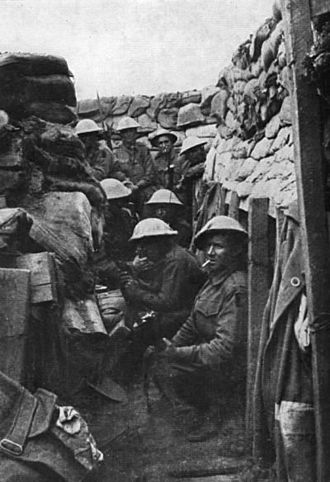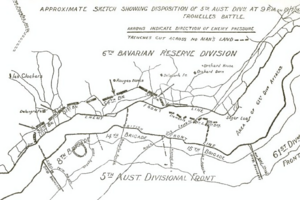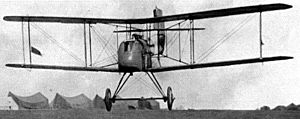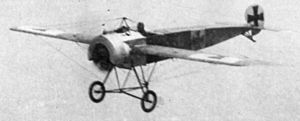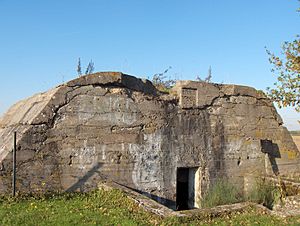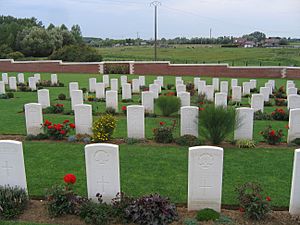Attack at Fromelles facts for kids
Quick facts for kids Attack at Fromelles |
|||||||
|---|---|---|---|---|---|---|---|
| Part of the Western Front in the First World War | |||||||
|
.
|
|||||||
|
|||||||
| Belligerents | |||||||
| Commanders and leaders | |||||||
| Gustav Scanzoni von Lichtenfels | Richard Haking | ||||||
| Strength | |||||||
| c. 30,000 | 10,000–15,000 | ||||||
| Casualties and losses | |||||||
| 1,600–2,000 | 7,080 | ||||||
| The front line near Fromelles had changed little since the Battle of Neuve Chapelle (10–13 March 1915). | |||||||
The Attack at Fromelles was a major battle during the First World War. It took place on 19–20 July 1916 on the Western Front in France. This battle involved British and Australian soldiers fighting against German forces.
The attack was meant to help the larger Battle of the Somme, which was happening about 80 kilometers (50 miles) south. The idea was to draw German troops away from the Somme. However, the attack at Fromelles did not go as planned. It was a very difficult fight for the British and Australian troops.
The soldiers faced strong German defenses and were outnumbered. The attack happened during daylight, making them easy targets. The ground was also very wet and flat, with the Germans holding higher ground. This gave them a clear view of the attacking forces.
The battle resulted in a German victory. It caused a huge number of casualties for the British and Australians. For Australia, it was one of the worst 24 hours in its entire history.
Why the Battle Happened
On 5 July 1916, during the Battle of the Somme, British military leaders thought the German defenses might soon break. They wanted other armies to prepare attacks to help. These attacks would try to make the German army weaker.
General Herbert Plumer, leading the Second Army, was busy preparing for another attack. But he could send one division to help the First Army. General Charles Monro of the First Army ordered a plan for a two-division attack. This attack would target Aubers Ridge, Aubers, and Fromelles. However, the plan was changed because there were not enough troops for such a big goal.
Later, British intelligence found that Germany had moved some troops away from the Lille area. This made the British leaders think a joint attack could work. They ordered a large bombardment to make the Germans think a huge attack was coming. Then, a smaller infantry attack would follow.
The weather caused delays, and the main attack was postponed several times. Finally, it was set for 19 July.
Getting Ready for the Attack
The British XI Corps, led by Lieutenant-General Richard Haking, prepared for the attack. They had the 5th Australian Division and the 61st (2nd South Midland) Division. The Second Army also provided artillery support.
The battlefield was very challenging. It was flat, waterlogged, and easily seen from Aubers Ridge, which was held by the Germans. The attack front was about 4,000 yards (3.7 km) wide.
The British had many guns ready for the attack. There were 296 field guns and 78 heavy guns. This was a very large number of guns for the area. They also had trench mortars to cut the enemy's barbed wire.
The plan was to bombard the German lines heavily. This was supposed to cause many casualties and make the Germans unable to fight. Then, the British soldiers would rush forward and capture the German front line. They hoped to reach the German second line quickly.
German Defenses
The Germans had spent a lot of time building strong defenses. Their front line was very well fortified with barbed wire and hidden concrete machine-gun nests. They also had a second trench close behind the first one. This second trench was for soldiers to shelter during bombardments.
They also built communication trenches. These allowed them to move reinforcements safely. The Germans had also built a reserve position about 2 to 3 kilometers (1.2 to 1.9 miles) behind the front line. This was out of range of enemy field artillery. This second position was ready to stop any breakthrough.
The German 6th Army had been quiet in this area for a while. In July 1916, the 6th Bavarian Reserve Division held a 4.5-mile (7.2 km) stretch of the front. Each German regiment had one battalion in the front line, one in support, and one in reserve. They had many shelters with thick concrete protection.
The Attack Begins
On 19 July, patrols reported that the German lines seemed weakly held. However, German soldiers stopped Australian raiders. The barbed wire was still mostly in place.
The main artillery bombardment began at 11:00 a.m. The attack was set for 6:00 p.m. The Germans quickly started firing back, causing casualties to the British and Australian troops. The British attempts to trick the Germans with fake advances did not work.
At 5:30 p.m., the Australian and British soldiers began to move into no man's land. This was the dangerous area between the two armies.
British Attack
The 61st (2nd South Midland) Division faced many problems. Some of their exit points from their trenches were under German machine-gun fire. Soldiers trying to get through were killed.
Some troops managed to get close to the German lines. They found the wire cut and the Germans unable to fight back. But uncut wire stopped them from reaching the second German line. German machine-gun fire from the sides caused many casualties.
In the center, many soldiers were shot down in no man's land. Only a few got close to the German wire, but it was uncut. They were killed or wounded. On the left, the attacking battalions were under German artillery fire all morning. Their attack was stopped by German fire, and many soldiers were lost.
Australian Attack
The 5th Australian Division attacked over their trench walls. They had fewer casualties at first than the British division.
The 15th Australian Brigade advanced but was stopped by machine-gun fire. The 14th Australian Brigade had fewer casualties and reached the German front line. They even took some prisoners. But when they pushed on, they found only flat, water-filled ditches.
The 8th Australian Brigade also attacked through heavy machine-gun fire. They reached the German breastwork (a low wall of earth for defense). They found the same difficult terrain as the 14th Brigade.
Some Australian units managed to capture about 1,000 meters (1,100 yards) of the German front line. They started to dig in and build defenses. However, German artillery fire and machine-gun fire made this very difficult.
German Counter-attacks
The Germans quickly launched counter-attacks. They used machine-gun fire from their strongpoints. The Australian troops in the captured German lines faced a desperate situation.
On the night of 19 July and into 20 July, German counter-attacks forced the Australians to slowly withdraw. Many Australians were cut off and captured. By 9:00 a.m. on 20 July, the remaining Australian soldiers had returned to their original front line.
A short truce was agreed upon by the Germans and Australians. This allowed them to recover their wounded soldiers.
Air Operations
British planes from the Royal Flying Corps (RFC) watched the German lines from above. They took photos and looked for German troop movements. During the battle, they flew observation missions for the artillery.
British planes also fought German reconnaissance aircraft. On 19 July, two German planes and one British plane were shot down. British planes also bombed German army buildings, supply dumps, and railways.
Aftermath and Casualties
The Attack at Fromelles was a terrible loss for the Allies. The 5th Australian Division suffered 5,513 casualties (killed, wounded, or missing). Two Australian battalions had so many casualties that they had to be completely rebuilt. For example, out of 887 men in the 60th Australian Battalion, only one officer and 106 other soldiers survived unharmed.
The 61st (2nd South Midland) Division also suffered 1,547 casualties. The Germans had fewer losses, with about 1,600 to 2,000 casualties.
Many Australian and British soldiers killed in the battle were buried by the Germans shortly after the fighting. These burial pits were later photographed by British reconnaissance planes.
Remembering the Fallen
New Cemetery
Most war graves from the First World War were found in the 1920s. British and Empire soldiers were reburied in special cemeteries. Four hundred unidentified Australian soldiers from Fromelles were reburied at the V.C. Corner Australian Cemetery and Memorial. This is the only large cemetery in France just for Australian soldiers.
In 2002, a man named Lambis Englezos started looking for an unmarked mass grave near Fromelles. He and other researchers found a site called Pheasant Wood. They believed the pits had not been found after the war. The Australian Army and British groups supported an exploration of the site.
In 2007, a survey showed that the pits had not been disturbed. They contained the remains of 337 soldiers. From May to September 2009, archaeologists dug up the remains of 250 soldiers. About 173 of these were Australian. DNA samples were taken to identify them.
A new cemetery was built nearby. On 30 January 2010, the first body was buried at the Fromelles (Pheasant Wood) Military Cemetery. The remaining bodies were buried in individual ceremonies. By March 2010, 75 Australian soldiers had been identified using DNA. On 19 July 2010, the 94th anniversary of the battle, the last unidentified soldier was buried.
Memorials and Museum
There are several places in the Fromelles area that remember the battle.
- The V.C. Corner Australian Cemetery and Memorial was built in the early 1920s.
- The Australian Memorial Park opened in 1998.
- The Fromelles (Pheasant Wood) Military Cemetery was finished in 2010.
There are also other small cemeteries with burials from the battle. In Fromelles Town Hall, there was a museum called "Fromelles Weppes Terre de Mémoire." This museum honored the work of people like Robin Corfield and Lambis Englezos, who helped bring attention to the battle and the many lives lost. A new museum opened in 2014.
See Also
- List of Australian military disasters



